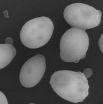(Press-News.org) Hope for new ways of treating devastating neurodegenerative disorders such as Huntington's disease has been raised by a trans-Atlantic team of researchers thanks to the use of cutting-edge genetic techniques.
Led by the University of Leicester, scientists from the University of Lisbon (led by Dr Tiago Outeiro) and University of California at San Francisco (led by Dr Paul Muchowski) collaborated to generate novel approaches for tackling the diseases. Their work, funded by the Medical Research Council, is published in The Journal of Biological Chemistry.
At Leicester, working simply with baker's yeast, a team of biological scientists examined aspects of Huntington's disease. These yeast are extremely well-characterised and have powerful and facile genetics which allow researchers to rapidly interrogate this system at a genome-wide level. Research in recent years has found that baker's yeast can be used to study mechanisms underlying disease pathology, and this simple organism has been used to identify several promising candidate drug targets for neurodegenerative disorders, including Huntington's disease.
Flaviano Giorgini, lead author of the research paper at the University of Leicester, said: "My research group is interested in using genetics and genomics approaches to better understand the fatal neurodegenerative disorders of Huntington's disease and Parkinson's disease.
"By clarifying the genes and cellular pathways involved in these diseases we hope to identify novel strategies for treatment and therapy of these disorders. In our work we use simple, yet powerful genetic organisms such as baker's yeast and fruit flies to model aspects of these devastating diseases.
"In the current study we have used a novel functional genomics profiling approach to identify genes which can protect these simple organisms from disease symptoms. We then used computational approaches to uncover a network of interactions amongst these genes, which has shed light on the mechanisms underlying this disorder."
Using the approach above, the scientists found that many of the protective genes are involved in translation – a cellular process in which messenger RNA (mRNA) is decoded by the ribosome to produce specific proteins. This is particularly intriguing as this process has not been implicated in Huntington's disease in the past.
This is important because recent work indicates that pharmacological modulation of translation may represent a promising avenue for treatment of Parkinson's disease. Therefore, this new research strongly dovetails with these observations and suggests that similar drug treatment may be beneficial in Huntington's disease.
Dr Giorgini, of the Department of Genetics, said: "Our research has taken advantage of cutting edge genomics approaches using a simple model organism to identify a novel area for potential therapeutic intervention for Huntington's disease.
"If our findings are validated by further studies, it might suggest a novel therapeutic approach for this devastating disorder - which is critical as currently there are no treatments for onset or progression of symptoms."
INFORMATION:
NOTES TO EDITORS
For more information, please contact:
Flaviano Giorgini, PhD
Lecturer in Mammalian Genetics
Department of Genetics
University of Leicester
Leicester LE1 7RH, UK
Phone: 44 (0)116 252 3485
E-mail: fg36@le.ac.uk
Web: http://www.le.ac.uk/ge/fg36/
Citation:
Functional Gene Expression Profiling in Yeast Implicates Translational Dysfunction in Mutant Huntington Toxicity
The Journal of Biological Chemistry, Vol. 286, Issue 1, 410-419, JANUARY 7, 2011
Eran Tauber; Leonor Miller-Fleming; Robert P. Mason; Jannine Clapp; Nicola J. Butler; Flaviano Giorgini University of Leicester
Leonor Miller-Fleming; Tiago F. Outeiro
Universidade de Lisboa
Wanda Kwan; Paul J. Muchowski
University of California at San Francisco
ARTICLE #10.1074/jbc.M110.101527
ABOUT THE MRC
For almost 100 years the Medical Research Council has improved the health of people in the UK and around the world by supporting the highest quality science. The MRC invests in world-class scientists. It has produced 29 Nobel Prize winners and sustains a flourishing environment for internationally recognised research. The MRC focuses on making an impact and provides the financial muscle and scientific expertise behind medical breakthroughs, including one of the first antibiotics penicillin, the structure of DNA and the lethal link between smoking and cancer. Today MRC funded scientists tackle research into the major health challenges of the 21st century. www.mrc.ac.uk
ABOUT HUNTINGTON'S DISEASE
Huntington's disease is an inherited disease of the brain
The disease damages the nerve cells in the brain, causing deterioration and gradual loss of function of areas of the brain. This affects movement, cognition (perception, awareness, thinking, judgement) and behaviour.
Early symptoms such as personality changes, mood swings and bizarre behaviour are often overlooked at first and attributed to something else.
Huntington's disease was originally called Huntington's chorea, after the Greek word for dancing, as the associated involuntary movements can look like jerky dancing.
Both men and women with a family history of Huntington's can inherit the disease and symptoms usually start to show in adulthood.
Juvenile (children's) Huntington's disease develops before the age of 20 years. Only 5-10% of people with Huntington's develop the condition at a very young age, and the pattern of features may be different.
UK studies have found that approximately 6-7 people per 100,000 of the population are affected by Huntington's disease. However, it is likely that the true figure is much higher.
There is no cure for Huntington's disease and its progress cannot be reversed or slowed down.
Medication can be used to manage some of the symptoms, and therapies (such as speech and language therapy and occupational therapy) can help with communication and day-to-day living
Surce: NHS Choices (http://www.nhs.uk/conditions/Huntingtons-disease/Pages/Introduction.aspx)
New hope in fight against Huntington's disease
University of Leicester-led research uncovers potential new approaches for tackling devastating disorder
2011-01-11
ELSE PRESS RELEASES FROM THIS DATE:
New research shows how light can control electrical properties of graphene
2011-01-11
New research published today, shows how light can be used to control the electrical properties of graphene, paving the way for graphene-based optoelectronic devices and highly sensitive sensors.
This year's Nobel Prize for Physics was awarded for research into graphene, recognising its potential for many applications in modern life, from high-speed electronics to touchscreen technology. The UK's National Physical Laboratory, along with a team of international scientists, have further developed our understanding of graphene by showing that when this remarkable material ...
Researchers uncover behavioral process anticipating the results of rapid eye movements
2011-01-11
A team of researchers has demonstrated that the brain predicts consequences of our eye movements on what we see next. The findings, which appear in the journal Nature Neuroscience, have implications for understanding human attention and applications to robotics.
The study was conducted by researchers at University Paris Descartes, New York University's Department of Psychology, and Ludwig-Maximilian University in Munich.
Our eyes jump rapidly about three times each second to capture new visual information, and with each jump a new view of the world falls onto the retina—a ...
Federal peer review may be overstretched and error prone
2011-01-11
The federal peer review system, by which research proposals are judged worthy for funding, may be "over stretched" and "susceptible to error," said Elmer Yglesias, a researcher at the Science and Technology Policy Institute and author of "Improving Peer Review in the Federal Government," published in the current issue of TECHNOLOGY & INNOVATION, Proceedings of the National Academy of Inventors ™, (www.academyofinventors.org) now available on-line at: http://www.cognizantcommunication.com/filecabinet/Technology/techinnovation.html
According to Yglesias, the federal ...
Radiometer finds sources of fire
2011-01-11
The number and scale of forest fires has increased dramatically in recent decades. Who can forget last summer's television images of blazing infernos devouring miles and miles of forest in Russia, Australia and California? In Germany, too, several regions are under threat precipitated by climate change – Brandenburg, for example, is one of the areas of Europe that are most at risk.
Often, fires can only be contained from the air. In order to fight them in a targeted way, firefighting planes need to be given precise information on where the flames are at their worst. Infrared ...
No left turn: 'Superstreet' traffic design improves travel time, safety
2011-01-11
The so-called "superstreet" traffic design results in significantly faster travel times, and leads to a drastic reduction in automobile collisions and injuries, according to North Carolina State University researchers who have conducted the largest-ever study of superstreets and their impacts.
Superstreets are surface roads, not freeways. It is defined as a thoroughfare where the left-hand turns from side streets are re-routed, as is traffic from side streets that needs to cross the thoroughfare. In both instances, drivers are first required to make a right turn and ...
Researchers create 'scoring system' for PTEN mutation testing
2011-01-11
Monday, January 10, 2011 – Cleveland – Researchers have discovered a method for more precise identification of individuals who should undergo testing for genetic mutations of the tumor suppressor gene PTEN, which associates with a variety of conditions including several types of cancers. The research has created a diagnostic scoring system that improves on established criteria.
Led by Charis Eng, M.D., Ph.D., Chair of the Genomic Medicine Institute at the Lerner Research Institute of Cleveland Clinic, the study – the largest clinical study to date on the identification ...
Minerals provide better indoor air
2011-01-11
Since the 50s, formaldehyde has been the basic material for many artificial resins and glues used in particleboards and plywood boards. Estimates indicate that more than 85 percent of all wood materials have adhesives containing formaldehyde. This substance escapes from the materials and, along with other sources, pollutes indoor air. This is why numerous ways have been developed to reduce emissions, and the International Agency for Research on Cancer (IARC) of the World Health Organization WHO has even classified formaldehyde as carcinogenic for humans. Thereupon both ...
Social class and changes in mortality from liver cirrhosis over the 20th Century
2011-01-11
A paper describing a dramatic change during the 20th century in England and Wales in the association between social class and mortality from liver cirrhosis features in Alcohol and Alcoholism. While deaths from cirrhosis were more common among higher social classes in the early part of the century, the pattern changed so that deaths from cirrhosis were much more common among the lower social classes by the end of the century. Data on male cirrhosis mortality by social class were obtained from the Registrar General's Decennial Supplements for the years 1921�.
The ...
Researchers show how Alzheimer's plaques lead to loss of nitric oxide in brain
2011-01-11
PITTSBURGH, Jan. 10 – A researcher at the University of Pittsburgh School of Medicine, in collaboration with scientists from the National Institutes of Health (NIH), has discovered that the deadly plaques of Alzheimer's disease interact with certain cellular proteins to inhibit normal signals that maintain blood flow to the brain. Their findings, which could lead to new approaches to treat the dementia, were recently published in Public Library of Science One.
Levels of nitric oxide (NO) – a signaling molecule that helps regulate blood flow, immune and neurological processes ...
Species loss tied to ecosystem collapse and recovery
2011-01-11
PROVIDENCE, R.I. [Brown University] — The world's oceans are under siege. Conservation biologists regularly note the precipitous decline of key species, such as cod, bluefin tuna, swordfish and sharks. Lose enough of these top-line predators (among other species), and the fear is that the oceanic web of life may collapse.
In a new paper in Geology, researchers at Brown University and the University of Washington used a group of marine creatures similar to today's nautilus to examine the collapse of marine ecosystems that coincided with two of the greatest mass extinctions ...
LAST 30 PRESS RELEASES:
UN University Report challenges climate change as sole trigger of Syrian Civil War, exposing governance failures in drought response
Real estate investment trust (REIT) acquisition associated with hospital closure and bankruptcy
New Raman imaging system detects subtle tumor signals
Boston Children’s receives a $7.5 million grant from Aligning Research to Impact Autism (ARIA) to provide clinical research coordination for the IMPACT Network
Spray-on antibacterial coating offers new protection for plants against disease and drought
ESMT Berlin study: What makes a first offer successful in negotiations
Groundbreaking ceremony marks the beginning of CTAO-South Array construction in Chile
Why swearing makes you stronger
What prevents more cancer patients from enrolling in potentially life-saving clinical trials?
UK’s worst-case climate risks laid bare for lawmakers
A decline in churchgoing linked to more deaths of despair
TAMEST announces Maralice Conacci-Sorrell, Ph.D., UT Southwestern Medical Center, as 2026 Mary Beth Maddox Award & Lectureship Recipient
Global study to evaluate whether dengue outbreaks can be anticipated earlier
Chonnam National University researchers propose innovative voltage-loop control for power factor correction
Accelerating next-generation drug discovery with click-based construction of PROTACs
Detecting the hidden magnetism of altermagnets
$7M gift supports health research, engineering and athletics at UT San Antonio
NU-9 halts Alzheimer’s disease in animal model before symptoms begin
Hospitals acquired by real estate investment trusts associated with greater risk of bankruptcy, closure
City of Hope scientists study rare disorder to uncover mechanism and hormone regulation underlying fatty liver disease and sweet aversion
Your genes may influence gut microbiome of others, rat study shows
‘Personality test’ shows how AI chatbots mimic human traits – and how they can be manipulated
Global food systems driving twin crises of obesity and global heating
Osaka Medical and Pharmaceutical University researchers capture real-time molecular movies of enzyme catalysis
Could your genes influence the gut microbiome of others?
Clues to Alzheimer’s disease may be hiding in our ‘junk’ DNA
Study reveals that the body uses different sensors to detect cold in the skin and in internal organs
iPS cells from dish to freezer and back
Deep neural networks enable accurate pricing of American options under stochastic volatility
Collective risk resonance in Chinese stock sectors uncovered through higher-order network analysis
[Press-News.org] New hope in fight against Huntington's diseaseUniversity of Leicester-led research uncovers potential new approaches for tackling devastating disorder




